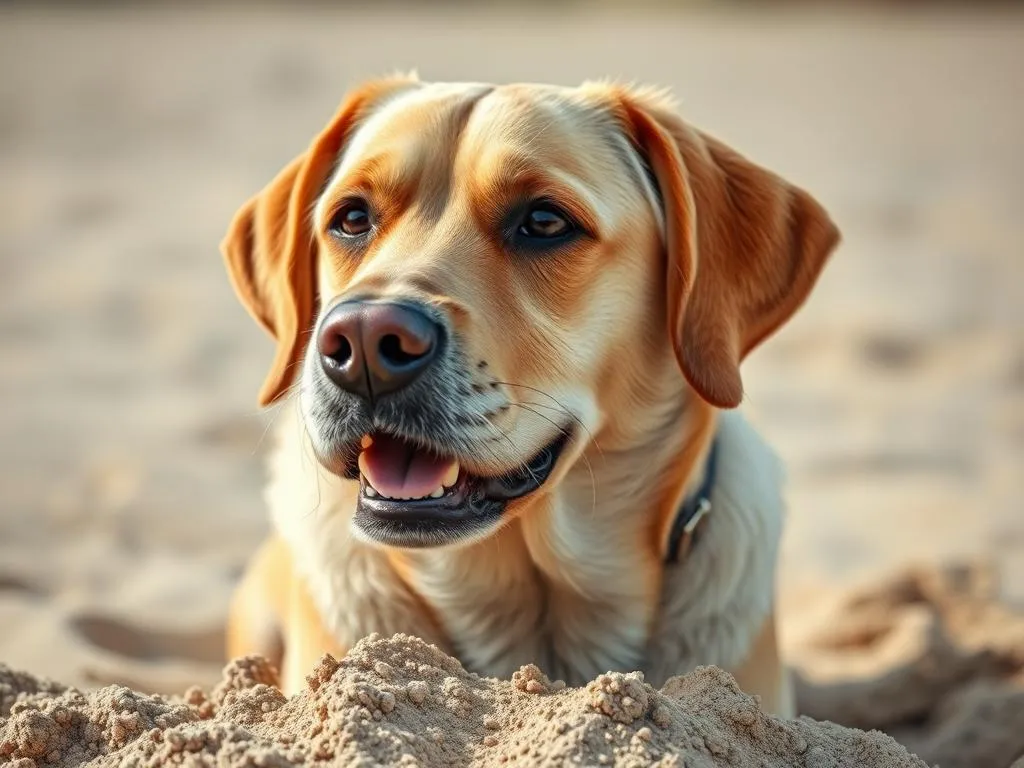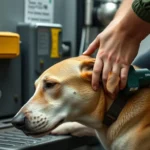
Dogs are naturally curious creatures, and their adventurous spirit often leads them to explore the world around them in various ways. One common behavior that can raise alarm among dog owners is when a dog eats sand. While it might seem harmless at first, understanding the potential risks and health implications of this behavior is crucial for every pet parent.
Understanding Canine Behavior
Why Do Dogs Eat Sand?
Dogs can eat sand for several reasons, often stemming from their natural instincts. One significant reason is exploration; dogs use their mouths to investigate their environment much like humans use their hands. When they encounter sand, especially in playful situations, they may inadvertently ingest it while digging or playing.
Another possible reason is nutritional deficiencies. Dogs may eat non-food items, a condition known as pica, when they lack certain nutrients in their diet. Sand ingestion might be their way of seeking minerals that they feel are missing from their food.
Lastly, anxiety or stress-related behaviors can lead to sand eating. Just as some dogs may chew on furniture or bark excessively when anxious, eating sand can become a coping mechanism for stress.
Common Scenarios for Eating Sand
Many dogs encounter sand during their outings, particularly at the beach or in sandy parks. The excitement of the environment can lead to enthusiastic digging and playing, resulting in the accidental ingestion of sand.
Additionally, dogs that enjoy digging behaviors may consume sand as they unearth buried treasures, whether it’s a stick or just a fun mound of sand. Owners should be particularly vigilant in these scenarios, as the combination of excitement and exploration can lead to unexpected behaviors.
Health Risks of Eating Sand
Gastrointestinal Issues
One of the most immediate concerns when a dog eats sand is the risk of gastrointestinal issues. Ingesting large amounts of sand can lead to blockages in the digestive tract, which can be serious and require medical attention. Symptoms of gastrointestinal distress may include:
- Vomiting
- Diarrhea
- Abdominal pain
- Lethargy
If a dog shows any of these signs after eating sand, it’s essential to monitor them closely.
Sand as a Contaminant
Sand can also pose health risks as a contaminant. Depending on the environment, sand may harbor bacteria, parasites, or harmful chemicals. For instance, sand from public beaches may contain harmful microorganisms that can lead to infections or gastroenteritis in dogs. Additionally, if the sand has been treated with pesticides or fertilizers, the ingestion of these chemicals can lead to serious health issues.
Long-term Effects
Chronic ingestion of sand can have long-term effects on a dog’s health. Over time, repeated ingestion can lead to chronic gastrointestinal issues or other complications, such as nutrient malabsorption or weight loss. Therefore, monitoring a dog’s behavior is crucial, especially if they have a history of eating sand.
What to Do if Your Dog Ate Sand
Immediate Steps to Take
If you discover that your dog has eaten sand, the first step is to assess the amount consumed. Was it a small amount while playing, or did they seem to eat a significant quantity? Observing your dog for any symptoms of distress is vital.
When to Consult a Veterinarian
It’s crucial to know when to consult a veterinarian. Signs that require immediate attention include:
- Persistent vomiting
- Severe abdominal pain
- Inability to defecate
- Lethargy or unresponsiveness
If your dog exhibits any of these symptoms, it’s best to seek veterinary care as soon as possible. Preparing for the vet visit involves gathering information about your dog’s behavior, the amount of sand consumed, and any other symptoms observed.
Potential Veterinary Treatments
Veterinarians may employ various diagnostic procedures to assess the situation, including X-rays or ultrasounds, to determine if there are any blockages. Treatment options can vary based on the assessment, including inducing vomiting if appropriate or prescribing medications to soothe gastrointestinal distress.
Preventive Measures
Training and Behavior Modification
To prevent your dog from eating sand, consider implementing training and behavior modification techniques. Positive reinforcement can go a long way. Whenever your dog starts to dig or show interest in the sand, redirect their attention to a toy or engage them in a different activity.
Providing alternatives such as safe chew toys or engaging in interactive play can help deter them from the behavior. Consistency is key, as reinforcing positive behavior will gradually reduce the urge to eat sand.
Safe Play Areas
Choosing safe play areas is another preventive measure. If your dog enjoys sandy environments, ensure that these areas are clean and free from potential contaminants. Supervised playtime can also help you monitor your dog’s behavior closely, allowing you to intervene if they start eating sand.
Nutritional Considerations
Ensuring your dog is on a balanced diet is paramount. If you suspect that nutritional deficiencies may be the cause of your dog’s sand-eating habit, consult with your veterinarian about diet adjustments. A well-rounded diet can help address any potential deficiencies and reduce the likelihood of pica behaviors.
Frequently Asked Questions (FAQs)
Is eating sand harmful to dogs?
Yes, eating sand can be harmful to dogs. It can lead to gastrointestinal blockages, exposure to contaminants, and potential long-term health issues. Monitoring your dog’s behavior is essential to prevent these risks.
How much sand is too much?
While even small amounts of sand can cause issues, the risk escalates with larger quantities. If your dog consumes a notable amount of sand, it’s best to consult with a veterinarian for proper assessment.
Can I prevent my dog from eating sand?
Yes, you can prevent your dog from eating sand through training, providing safe play alternatives, and ensuring they receive a balanced diet. Consistent supervision and engagement during playtime are effective strategies.
Conclusion
Understanding the implications of your dog eating sand is essential for their health and well-being. By recognizing the reasons behind this behavior, the potential health risks, and knowing how to respond effectively, you can better protect your furry friend. Monitoring your dog’s behavior, providing a balanced diet, and implementing preventive measures can significantly reduce the likelihood of this concerning behavior. Always consult with your veterinarian for guidance tailored to your dog’s specific needs. Taking proactive steps will help ensure your dog remains healthy and happy.









